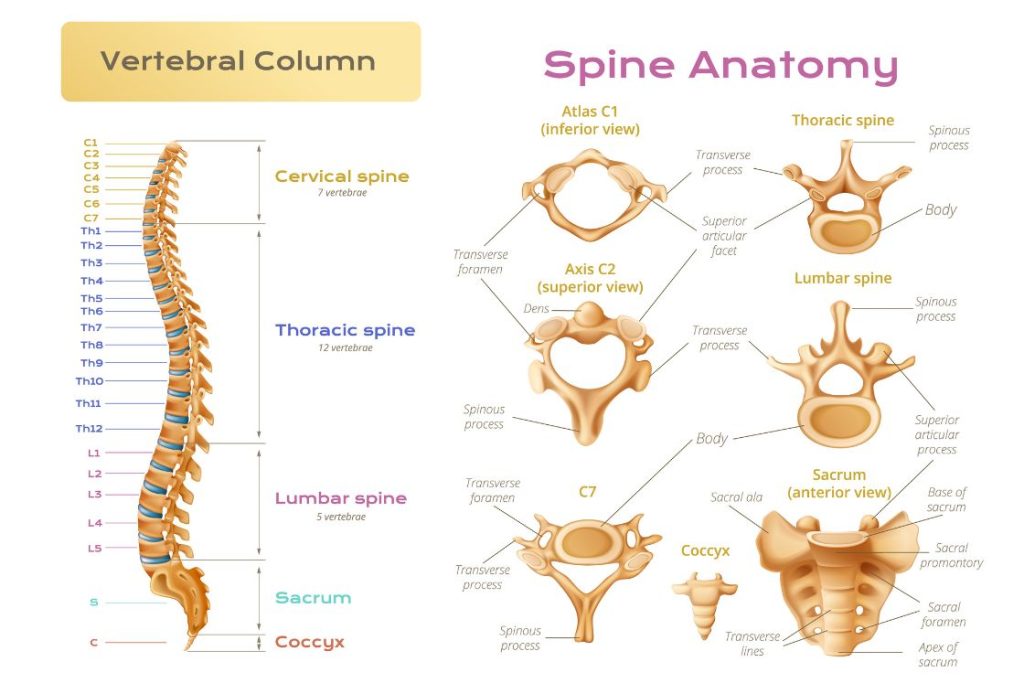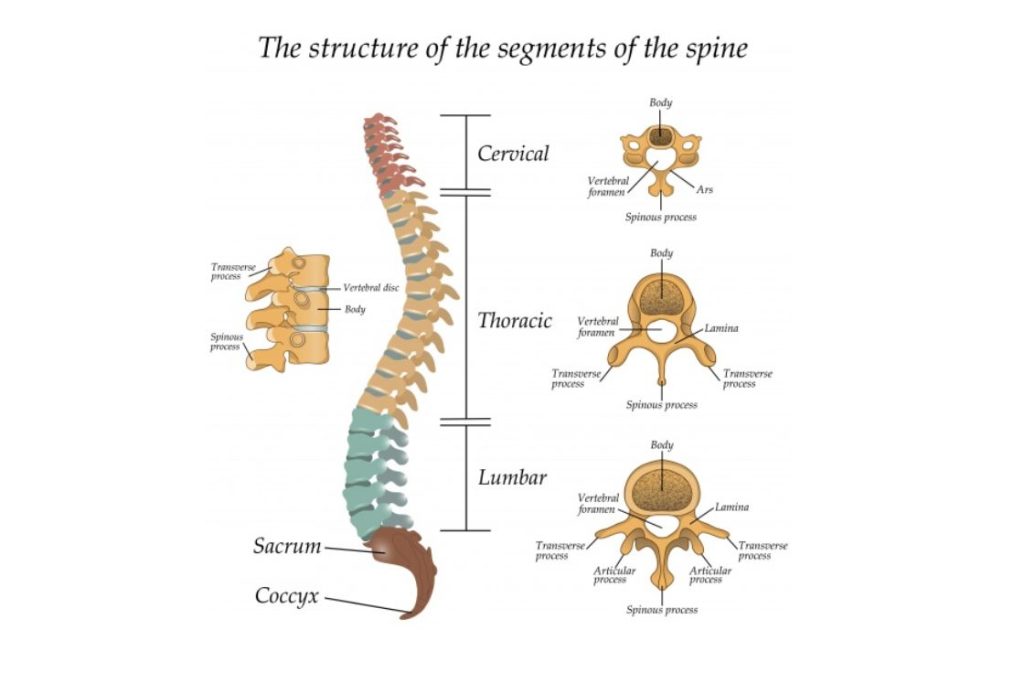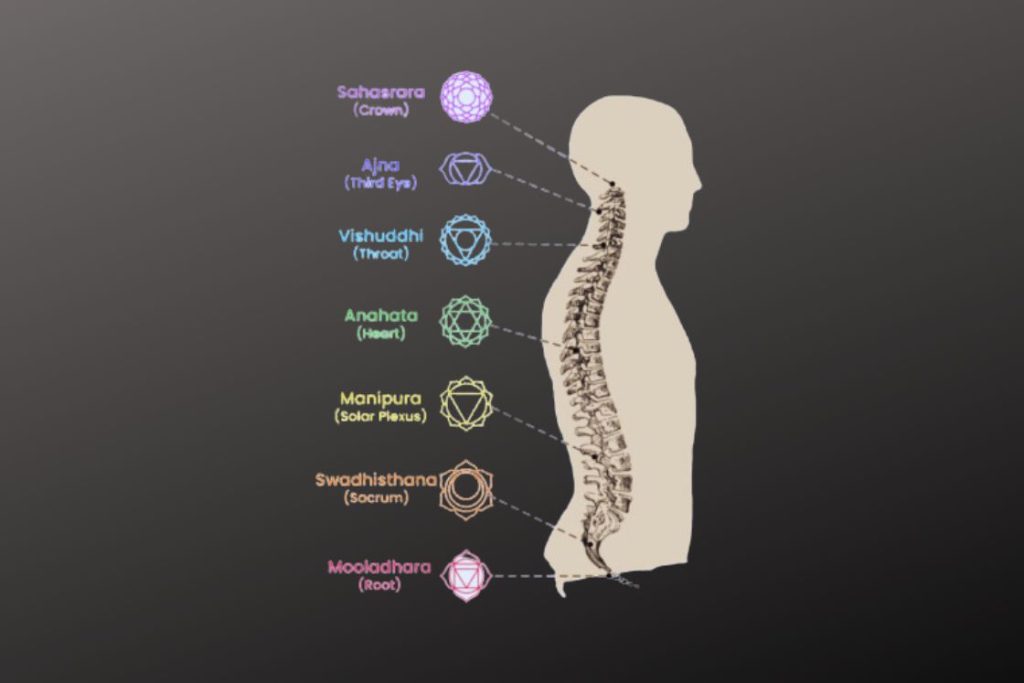- Anatomy of the Spine
- The Neurobiology of Spine Flexion
- Molecular Biology of Spine Flexion
- Spine Flexion in Yoga

When we think of Yoga, images of deep breaths, tranquil settings, and intricate poses often come to mind. But do we ever pause to consider the ancient wisdom behind this practice?
Yoga isn’t just about flexibility or strength; it’s a holistic journey that touches the mind, body, and soul. A key aspect of this journey is understanding our spine’s movements, especially spine flexion.
The spine flexion is a simple yet crucial movement and central to many yoga postures. It allows us to stretch, release tension, and even introspect. As you dive deeper into the world of Yoga, appreciating subtle techniques, like spine flexion, can really enrich your practice.
Ever observed a yogi gracefully transitioning from one pose to another? That fluidity often relies on spine flexion. Think of the forward bend in ‘Paschimottanasana‘. As you reach for your toes, your spine elegantly curves forward. Or the soothing ‘Balasana‘ (Child’s Pose), where you fold into yourself, letting your spine round naturally. And who can forget the gentle ‘Cat Pose‘, where your back arches like a stretching feline?
Each of these poses beautifully demonstrates spine flexion, allowing us to connect deeper with our bodies. Next time you practice, notice this graceful curve; it’s Yoga’s secret to spine health and flexibility!
Anatomy of the Spine

Strong yet flexible spine is the central structure responsible for supporting your body weight and controlling movement, as well as many other involuntary functions throughout the body. The spine is made up of small bony blocks called vertebrae. These vertebrae stack up like Lego pieces, with squishy intervertebral discs in between, acting like comfortable cushions. But, how is this structure held together? Thanks to strong ligaments that bind the vertebrae and the powerful muscles that provide support and movement.
Our spine is a marvel of biological engineering, right inside us!
Types of Movements
The spine renders most of its function through four signature movements.
- Flexion: Imagine flexion as the bending forward movement when you are bowing to an audience.
- Extension: Think of extension as your spine extending when you lean back and gaze at the sky.
- Lateral Flexion: If you try reaching your foot sideways without bending your knees, your spine would be going through lateral extension.
- Rotation: When you turn to glance over your shoulder, it’s your spine rotating to give you that range.
Driving each of your movements, from a simple nod to a twist, is your spine using a combination of these basic movements. So next time you move, give a silent cheer to this amazing structure that lets you remain agile!
Flexion in the Different Regions of the Spine and their Benefits
Diving into the molecular world of our spine provides a rich understanding of how its flexion plays a pivotal role in our overall well-being. Let’s break down the regions of the spine and unravel the science behind each segment’s flexion.

Cervical Flexion: Neck and Nerve Harmony
With the rise of technology, “tech neck” has become a prevalent concern. Regular flexion exercises for the cervical spine can counteract the forward tilt we often adopt, mitigating issues like muscle strain and disc herniation.
Gentle neck flexion can also facilitate increased blood flow to the brain, supporting cognitive function and potentially offering migraine relief.
Thoracic Flexion: Breathe and Balance
The thoracic region houses our rib cage. Flexion here aids in expanding lung capacity. Better lung expansion means more efficient oxygen-carbon dioxide exchange – crucial for cell health and energy.
A flexible thoracic spine will also support better posture, reducing wear and tear on intervertebral discs and maintaining the health of the spinal cord and surrounding nerve networks.
Lumbar Flexion: Lower Back Relief
Lumbar flexion, when done correctly, can help in maintaining the health of intervertebral discs. It allows the diffusion of nutrients at a molecular level, supporting disc longevity.
A flexible lumbar region also aids in evenly distributing mechanical stress. This benefit can reduce the risk of tissue inflammation and potential lower back pain.
Aggregate Benefits from Multiple Spine Flexion Pose
When you go through a spine flexion yoga flow or sequence, your spine is worked in multiple regions in multiple ways. This opens up multiple pressure points and stimulates multiple nervous pathways, generating whole range of benefits including:
- Enhancing spinal mobility and flexibility by making the synovial fluid thicker; the fluid that lubricates the joints.
- Counteracting the effects of prolonged sitting or poor posture.
- Stress relief and mental relaxation.
- Enhancing Mind-body Connection.
- Enhancing the brain’s adaptability by improving neuroplasticity, brain’s ability to forge new neural pathways.
- Potentially delaying degenerative neurological diseases.
The Neurobiology of Spine Flexion
To understand the science behind the benefits of spine flexion we need to know the following series of interaction points within our neurobiological system:
- Role of the spinal cord in transmitting nerve impulses: The spinal cord, a vital corridor of communication, conducts nerve impulses between the brain and the rest of the body. It’s like the main highway, transmitting messages that allow us to sense and respond to our surroundings.
- Interaction between the spine and peripheral nervous system: Beyond the spinal cord lies the peripheral nervous system, which extends to the furthest reaches of our body. When you feel the sensations in your fingers or toes during a stretch, it’s the interplay between your spine and this extensive nervous network, ensuring every part of the body is in sync.
- Mechanoreceptors in the spine: Dotted throughout our spine are sensitive detectors known as mechanoreceptors. These guardians of posture and balance constantly update us on our spine’s position and movement, ensuring we don’t overstretch or injure ourselves during our Yoga practice.
- How spine flexion enhances body awareness: By engaging in spine flexion, we fine-tune our body’s awareness. The flexion ignites these receptors, offering a heightened sense of alignment and posture. Over time, this helps yogis develop an intuitive understanding of their body’s limits and capabilities.
- Endorphin release and its mood-enhancing effects: The magic of spine flexion doesn’t stop at movement alone. As we stretch and flex, our body rewards us by releasing endorphins, nature’s own mood elevators. These chemicals, often associated with the “feel-good” factor, can uplift our spirits, making our Yoga session a rejuvenating experience.
- Role of Gamma-Aminobutyric Acid (GABA) in promoting relaxation: GABA plays a pivotal role in calming our mind. When we engage in spine-flexing exercises in Yoga, there’s a release of this neurotransmitter. The result? A serene state of relaxation, aiding in stress relief and promoting well-being.
Molecular Biology of Spine Flexion
What probably intrigues any logic-minded individual is what is it about the spine flexion that triggers and stimulates such a wide range of neurobiological activities? What kind of molecular activity does this incredible movement underpin?
- Changes in muscle fibers: When the spine flexes, it’s not just a superficial movement. At a microscopic level, muscle fibers undergo elongation. This means that individual muscle cells, or myocytes, stretch and adapt. Structurally, this involves a reorganization of actin and myosin filaments, the primary components of muscle contraction. Over time and with consistent flexion, such as that experienced in Yoga, these adaptations can lead to increased flexibility and resilience in the muscles.
- Effects on fibroblasts and the extracellular matrix: The extracellular matrix (ECM) is the non-cellular component present within all tissues, providing essential support. Fibroblasts are cells responsible for synthesizing this matrix. With repetitive spine flexion, fibroblasts can increase production of components like collagen, enhancing the ECM’s structure and improving overall tissue resilience.
- Activation of specific genes: The act of stretching and spine flexion isn’t just physical; it also communicates at a genetic level. Such movements can activate genes associated with muscle growth, repair, and adaptation. These genes then guide the synthesis of proteins that strengthen and repair muscle fibers.
- Role of myokines: When muscles work, they talk. Myokines are signaling molecules released by muscles during exercise. These molecules play various roles, from promoting muscle growth to regulating metabolism. In the context of spine flexion, myokines can enhance muscle response, promote repair, and even communicate with other organs, emphasizing the interconnectedness of our bodily systems.
- Impact on mitochondrial health: Mitochondria are our cellular powerhouses. With consistent spine flexion, these organelles experience a boost in their efficiency. They can produce more ATP, the primary energy currency of the cell, and this increased energy production supports the heightened demands of the working muscles.
- Implications for overall cell health: A robust and efficient mitochondrial network doesn’t only mean better energy production. It also translates to better cell health. Enhanced mitochondrial function can lead to improved endurance in muscles, reduced muscle fatigue, and an overall upliftment in cellular health, ensuring that our bodies remain resilient and adaptable.
To encapsulate, spine flexion in Yoga isn’t just an external movement. It initiates a cascade of intricate molecular events, showcasing the profound interconnectedness of movement, genetics, and cellular health. Embracing such movements holistically can elevate our understanding and experience of well-being.
Spine Flexion in Yoga | More Than Just Body Mechanics
In Yogic Tradition, our physical postures are more than just a play of muscles and bones; they’re a dance of energy. The spine, especially, is seen as the central channel through which our life force, or “prana,” flows. Let’s delve deeper into the yogic reality that incorporates spine flexion as an instrument to transform entire your state of being.
Stimulation of Chakras Through Spine Flexion

Our spine is home to seven energy centers, known as chakras. Each chakra corresponds to specific aspects of our being, from our basic survival instincts to our highest spiritual aspirations. Spine flexion, with its gentle coaxing of the vertebrae, is believed to stimulate these chakras, especially those located along the spine like the Muladhara (Root Chakra) at the base and Anahata (Heart Chakra) in the chest region. When we engage in poses that involve spine flexion, we’re not just moving physically; we’re also inviting an energetic awakening, kindling the dormant energies within these chakras.
Emotional Release and Mind-Body Connection
Ever noticed how certain poses, especially those involving spine flexion, bring about a rush of emotions? It’s not just you. Many yogis have shared experiences of emotional releases during poses like Paschimottanasana (Seated Forward Bend) or Balasana (Child’s Pose). These poses, while seemingly simple, allow us to turn inward, creating a space for introspection. The gentle compression and elongation of the spine in these postures might stir deep-seated emotions, enabling us to confront and release them. This process underpins the profound connection between our body’s physical state and our emotional landscape. As we flex and stretch, we’re also unwinding emotional knots, facilitating a deeper mind-body harmony.
The Heart of Alignment in Spine Flexion Poses
Every vertebra in our spine is like a bead in a sacred mala, and just like we wouldn’t want any bead out of place, we ensure each vertebra aligns in harmony. Proper alignment in spine flexion poses is paramount. It’s not just about looking right; it’s about feeling right. Misaligned postures can lead to undue strain, robbing the pose of its essence and sometimes leading to injury. By honoring our body’s alignment, we honor the wisdom of Yoga.
Mindfulness: The Heartbeat of Connection
Spine Flexion opens the gates to mindful breathing, and mindful breathing naturally leads to mindfulness, the gentle awareness that anchors us to the present. When we merge mindfulness with spine flexion, a doorway to deeper self-awareness opens. Each inhalation becomes an invitation to observe, to be present, and each exhalation, a gentle reminder to release and let go.
The beauty of this awareness? It fosters an intimate dialogue between the mind and body. The curvature of the spine isn’t merely a physical act; it’s a reflection of our inner state, our emotions, our vulnerabilities. By being present and attuned to our breath, we don’t just practice Yoga; we live it.
In Yoga, our breath is the compass, and mindfulness the path. Together, they transform spine flexion from a mere pose to a meditative embrace, where each bend and arch becomes a whisper of the soul. A sacred confluence of body, breath, and spirit.
Spine Flexion and the Art of Surrender
Yoga teaches us the importance of Pranidhaana – surrender. In spine flexion poses, we’re often folding forwards, drawing our attention inward. This act of bending is not merely physical. It symbolizes a humble bow to the universe, a gesture of letting go of ego and surrendering to a higher consciousness. When we fold, we create space, not just in our bodies but in our minds, allowing grace to flow in.
Introspection: The Inner Mirror
As the spine curves and we fold, we’re physically turning towards ourselves, sparking introspection. This aligns with the yogic concept of Svadhyaya – self-study. In spine flexion, the external world fades, and we’re left with our inner landscape. It’s a moment to reflect, to listen, to truly see oneself without the noise of the outside world. It’s an invitation to connect with the deeper layers of our being.
Finding Balance and Inner Stillness
The very act of bending and flexing the spine brings into play the yogic principle of Sthira and Sukha – steadiness and ease. Even as we challenge our physical limits, we seek a space of comfort and balance. This harmony, this dance between effort and ease, allows us to find a serene stillness amidst the movement. The mind quiets, the chatter subsides, and we find ourselves in a tranquil cocoon of peace. To embrace spine flexion in Yoga is to venture into a sacred dialogue with oneself. It’s an exploration that goes beyond the physical, touching the very essence of our being.
Conclusion | The Intertwined Nature of Spine Movement
Our spine’s physical movement is a coming together of intricacies, a delicate assembly of bones, ligaments, and muscles. But this assembly isn’t merely skeletal; it resonates deep within, touching the very core of our neural networks and cellular machinery. Each flexion triggers a cascade of nerve impulses, sent coursing through our spinal cord, communicating vital sensory information. Concurrently, on a microscopic scale, cells respond, genes activate, and proteins work diligently, reflecting the molecular ballet that’s set into motion. In essence, every spine flexion is a testament to the seamless harmony between the physical, neural, and molecular realms of our being.
In the vast tradition of Yoga, spine flexion stands out, not just as a posture but as a conduit to holistic well-being. Beyond the evident physical benefits—enhanced flexibility, improved posture—it fosters a deep-seated mental and emotional equilibrium. The gentle arc of the spine in flexion cradles our stress, coaxing our minds towards serenity. Moreover, the potential neuroprotective effects underscore the profound interplay between movement and brain health.
To engage in spine flexion through Yoga is to embrace a practice that nourishes every facet of our existence. It’s a journey that underscores Yoga’s timeless wisdom: the pursuit of balance, integration, and holistic wellness. As we fold and stretch, we do more than just move; we connect, heal, and thrive.




